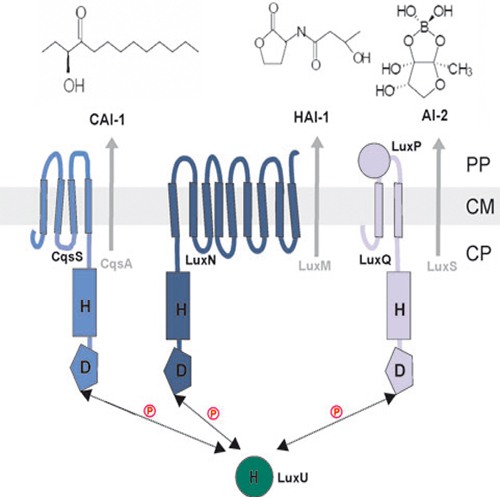Heterogeneity in quorum sensing-regulated bioluminescence of Vibrio harveyi
23-Jul-2009
Mol Microbiol, 2009, 73 Issue 2, 267-77 published on 23.07.2009
Molecular Microbiology, online article
Molecular Microbiology, online article
Quorum sensing (QS) refers to the ability of bacterial populations to read out the local environment for cell density and to collectively activate gene expression. Vibrio harveyi, one of the best characterized model organisms in QS, was used to address the question how single cells behave within a QS-activated community in a homogeneous environment. Analysis of the QS-regulated bioluminescence of a wild type strain revealed that even at high cell densities only 69% of the cells of the population produced bioluminescence, 25% remained dark and 6% were dead. Moreover, light intensities greatly varied from cell to cell at high population density. Addition of autoinducer to a bright liquid culture of V. harveyi increased the percentage of luminescent cells up to 98%, suggesting that V. harveyi produces and/or keeps the autoinducers at non-saturating concentrations. In contrast, all living cells of a constitutive QS-active mutant (DeltaluxO) produced light. We also found that QS affects biofilm formation in V. harveyi. Our data provide first evidence that a heterogeneous population produces more biofilm than a homogeneous one. It is suggested that even a QS-committed population of V. harveyi takes advantage of heterogeneity, which extends the current view of QS-regulated uniformity.











